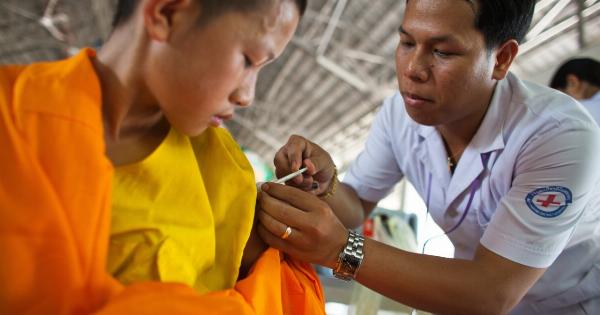Pregnancy is a joyous and exciting time for expectant mothers. However, when a woman is diagnosed with cancer during pregnancy, it can bring about many concerns and challenges.
Ensuring the healthy outcomes for both the mother and child becomes a top priority in these cases. In this article, we will explore various aspects of managing cancer during pregnancy, including the importance of a multidisciplinary approach, choosing the right treatment options, and providing support for the emotional well-being of the mother.
The Multidisciplinary Approach
Managing cancer during pregnancy requires a collaborative effort from a team of healthcare professionals. This team typically includes obstetricians, oncologists, radiologists, and neonatal specialists.
Working together, they assess the risks and benefits of different treatment options and develop a customized care plan tailored to the unique needs of the mother and her unborn child.
Treatment Options
Choosing the right treatment options for pregnant women with cancer is a delicate process that requires careful consideration. The primary goal is to treat the cancer effectively while minimizing harm to the developing fetus.
Chemotherapy, radiation therapy, and surgery are all potential treatment options, but their use depends on the gestational age of the fetus and the type and stage of cancer.
Chemotherapy
Chemotherapy is a common treatment for various types of cancer, but its use during pregnancy requires careful planning. Certain chemotherapy drugs can cross the placenta and harm the developing fetus.
However, recent advancements in medical research have led to the development of safer chemotherapy regimens that have been shown to have minimal risks to the unborn child.
Radiation Therapy
Radiation therapy is another treatment option that must be cautiously administered during pregnancy. The use of radiation therapy depends on the location of the cancer and the gestational age of the fetus.
External beam radiation, which precisely targets the tumor, is typically considered safe during the later stages of pregnancy when shielding techniques can be applied to protect the fetus.
Surgery
Surgical interventions are generally safe during pregnancy, depending on the type and stage of cancer. Surgeons aim to remove the tumor while preserving the health of the mother and the fetus.
However, the timing of surgery is crucial, and it often occurs during the second trimester when the risk to the fetus is relatively low.
Supporting Emotional Well-being
A cancer diagnosis during pregnancy can bring about a range of emotions, including fear, anxiety, and sadness. It is essential to provide emotional support for the mother throughout her cancer journey.
Mental health professionals, support groups, and counseling services can be invaluable resources in helping expectant mothers navigate the emotional challenges they may face.
Fetal Monitoring and Care
Regular fetal monitoring and care are crucial during the pregnancy of a woman with cancer.
Frequent ultrasounds, doppler flow studies, and non-stress tests help ensure the baby’s well-being and enable any potential complications to be addressed promptly. Neonatal specialists play a vital role in providing expert care to address any preterm deliveries or other neonatal complications that may arise.
Managing Side Effects
Cancer treatments can often lead to side effects that can impact both the mother and the developing fetus. It is important to closely monitor and manage these side effects to ensure the well-being of both.
Nausea, fatigue, and hair loss are common side effects that can be alleviated through medications, lifestyle modifications, and emotional support.
Delivery Planning
The method and timing of delivery for pregnant women with cancer depend on various factors, including the type and stage of cancer and the overall health of the mother and fetus.
In some cases, an early induction or cesarean section may be recommended to allow the mother to focus on her cancer treatment. However, in other instances, a full-term delivery may be possible. The delivery plan is determined by the healthcare team in close consultation with the mother.
Postpartum Care
Following delivery, postpartum care becomes essential for both the mother and the newborn. This includes monitoring the mother’s physical recovery, providing breastfeeding support, and assessing the mental health of the mother.
Continued collaboration between the obstetric and oncology teams ensures that any necessary cancer treatments or ongoing care is seamlessly integrated into the postpartum period.
Conclusion
Managing cancer during pregnancy demands a multifaceted approach that prioritizes the health of both the mother and the unborn child.
By utilizing a multidisciplinary team, making informed decisions about treatment options, and providing comprehensive support throughout the journey, healthy outcomes for both mother and child can be achieved. Despite the challenges, with proper care and attention, women diagnosed with cancer during pregnancy can successfully navigate their treatment while safeguarding the well-being of their precious little one.































